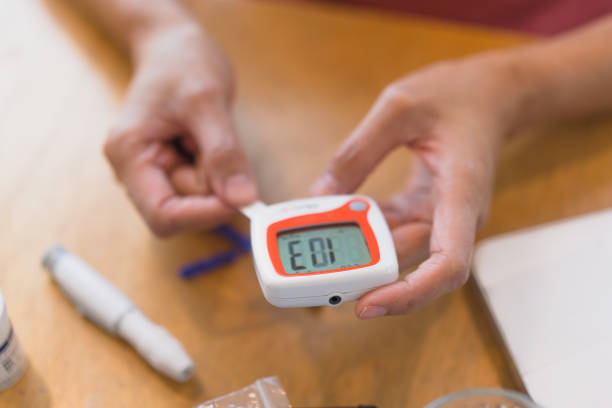Why Morning Routines Matter for Blood Sugar
Your morning sets the tone for your entire day. If you start with steady blood sugar, you’re more likely to have stable energy, fewer cravings, and better focus. Your brain and muscles get the fuel they need in a slow, steady way, which helps you stay productive and alert. But if your blood sugar spikes and crashes early, you may feel tired, hungry, and moody. This rollercoaster effect can also trigger more snacking and lead to unhealthy food choices later in the day.
By building healthy morning habits, such as eating a balanced breakfast, moving your body, staying hydrated, and managing stress, you can support your body’s natural balance and keep blood sugar steady throughout the day. These small steps in the morning act like a foundation—helping you feel more in control of your energy, appetite, and overall health.
Eat a Balanced Breakfast
Breakfast is the most important meal for blood sugar stability. What you eat first thing in the morning can set the pace for your energy, mood, and cravings throughout the day. A balanced breakfast helps prevent quick spikes and drops in blood sugar by giving your body steady fuel. To build this balance, aim to include three key nutrients:
- Protein (eggs, Greek yogurt, tofu, or nuts) – Protein helps slow digestion, keeps you full longer, and reduces hunger later in the day.
- Healthy fats (avocado, olive oil, nut butter) – Fats provide lasting energy and help your body absorb important vitamins.
- Fiber-rich carbs (oats, berries, whole grain bread) – Fiber supports digestion, slows down sugar release into the bloodstream, and boosts gut health.
When these nutrients are combined, they work together to keep blood sugar steady, support metabolism, and give you lasting energy for the morning and beyond.
Why Balance Matters
Protein and fiber slow down how fast sugar enters your bloodstream. This prevents spikes that lead to crashes. A study from Harvard School of Public Health shows fiber also improves gut health, which plays a role in blood sugar control.
Examples of Balanced Breakfasts
- Veggie omelet with avocado on whole-grain toast
- Greek yogurt topped with chia seeds and berries
- Oatmeal with walnuts, flaxseeds, and a spoon of almond butter

Start the Day with Movement
Exercise helps muscles use glucose for energy, lowering blood sugar levels naturally. When you move your body, your cells become more sensitive to insulin, which makes it easier for them to absorb and use sugar from your bloodstream. This helps prevent high spikes and supports overall balance. Even 10–15 minutes of light activity in the morning can make a difference.
A short walk, stretching routine, or quick bodyweight workout not only supports blood sugar control but also boosts circulation, improves mood, and wakes up your metabolism for the day ahead. Starting with small, consistent movement in the morning sets the stage for healthier choices and steadier energy all day.
Simple Morning Exercises
- Brisk walk outside
- Gentle yoga or stretching
- Bodyweight moves like squats or push-ups
According to the American Diabetes Association, physical activity improves insulin sensitivity, which helps your body use blood sugar more effectively.
Stay Hydrated
Dehydration can raise blood sugar levels because there’s less water to dilute the glucose in your blood. When your body is short on fluids, your kidneys have a harder time flushing out excess sugar, which can lead to higher readings. Staying hydrated supports healthy circulation, kidney function, and overall energy. Starting your day with water is one of the easiest ways to help your body maintain balance.
A full glass in the morning can wake up your system, rehydrate you after hours of sleep, and prepare your body to handle food more effectively. Adding lemon, cucumber, or even a pinch of sea salt can also boost hydration and provide extra minerals your body needs.
Morning Hydration Tips
- Drink a full glass of water as soon as you wake up.
- Add lemon or cucumber slices for flavor.
- Limit sugary drinks like juice or sweetened coffee.
Prioritize Protein Early
Eating protein in the morning supports satiety and reduces cravings later in the day. Protein takes longer to digest than simple carbs, which means it keeps you feeling full and satisfied for hours. This steady release of energy helps you avoid mid-morning crashes that often lead to snacking on sweets or processed foods.
It also helps prevent sharp blood sugar spikes after meals by slowing the absorption of glucose into your bloodstream. Starting your day with protein not only supports blood sugar control but also fuels your muscles, boosts metabolism, and improves focus, making it a key part of a balanced morning routine.
Easy Protein Options
- Hard-boiled eggs
- Protein smoothies
- Cottage cheese with fruit
A study published in the American Journal of Clinical Nutrition found that a high-protein breakfast reduces post-meal blood sugar responses.
Manage Stress from the Start
Stress raises cortisol, a hormone that increases blood sugar. When cortisol levels stay high, your body releases more glucose into the bloodstream as part of the “fight or flight” response. Over time, this can make it harder to keep blood sugar balanced and may even increase cravings for sugary foods.
That’s why a stressful morning can set the stage for unstable levels all day. By starting the day with calming practices—such as deep breathing, meditation, or journaling—you can lower stress hormones, support steady energy, and create a healthier environment for blood sugar control.
Stress-Reducing Morning Practices
- Deep breathing exercises
- Journaling
- Mindful meditation for 5 minutes
Research from the Cleveland Clinic highlights that stress management improves both blood sugar and overall health.

Get Sunlight in the Morning
Exposure to natural light in the morning supports circadian rhythm, which influences blood sugar regulation. Your circadian rhythm is your body’s internal clock, and when it’s in sync, it helps control hormones that affect appetite, energy, and glucose levels. Morning light signals to your brain that it’s time to be alert and active, which can improve metabolism and support better blood sugar balance throughout the day.
Sunlight also boosts vitamin D, linked to improved insulin sensitivity and stronger immune health. Just 10–15 minutes of natural light in the morning—whether through a walk, opening the blinds, or sitting by a sunny window—can make a noticeable difference in how your body manages blood sugar.
Easy Ways to Get Morning Sun
- Eat breakfast near a sunny window
- Take a short walk outside
- Open blinds right after waking up
Avoid Sugary Starts
Many people reach for muffins, pastries, or sweetened cereal in the morning. These foods are high in refined carbs and added sugar, which the body digests quickly. As a result, they cause quick spikes in blood sugar followed by crashes that leave you feeling tired, hungry, and unfocused.
This rollercoaster effect can also trigger cravings for more sugar later in the day, making it harder to make healthy choices. Replacing these options with whole, nutrient-dense foods like oats, eggs, or fruit paired with protein can help you start the day with steady energy and better blood sugar control.
Better Alternatives
- Swap fruit juice for whole fruit
- Replace sweetened cereal with oats
- Choose black coffee or green tea over flavored lattes
Include Fiber Early in the Day
Fiber slows down digestion, helps you feel full, and keeps blood sugar steady. Starting your day with fiber sets the tone for better control throughout the day.
High-Fiber Breakfast Ideas
- Overnight oats with chia seeds
- Whole-grain wrap with eggs and spinach
- Smoothie with flaxseed and leafy greens
Plan Your Snacks Ahead
If you know your next meal is hours away, planning snacks can prevent sugar crashes. Healthy snacks help maintain steady energy.
Smart Snack Options
- Apple slices with almond butter
- Carrot sticks with hummus
- Handful of mixed nuts

Build a Consistent Routine
Your body thrives on rhythm. Waking up at the same time, eating at regular intervals, and moving your body consistently help regulate blood sugar more effectively.
Simple Consistency Habits
- Set a regular wake-up time
- Avoid skipping breakfast
- Keep a short morning walk as part of your daily routine
Sample Morning Routine for Stable Blood Sugar
Here’s a simple plan you can try:
- Wake up and drink a glass of water.
- Step outside for 10 minutes of sunlight and light movement.
- Enjoy a high-protein, high-fiber breakfast.
- Practice 5 minutes of deep breathing or journaling.
- Prepare a healthy snack to take with you.
This routine takes less than an hour and helps set you up for balanced energy all day.
Conclusion: Take Charge of Your Mornings
Stabilizing blood sugar doesn’t have to be complicated. Small changes in your morning routine can make a big difference. Start by including protein in your breakfast, which helps keep your energy steady and prevents sugar spikes. Add some movement, like a short walk or stretching, to help your body use glucose more efficiently. Drinking water first thing in the morning supports your metabolism and keeps you hydrated.
Finally, take a few minutes to manage stress with deep breathing or a quick mindfulness exercise. By combining these simple habits, you can set the tone for better energy, improved mood, and overall health throughout your day.
Which of these morning habits do you already practice? Share your routine in the comments below—I’d love to hear your tips!

